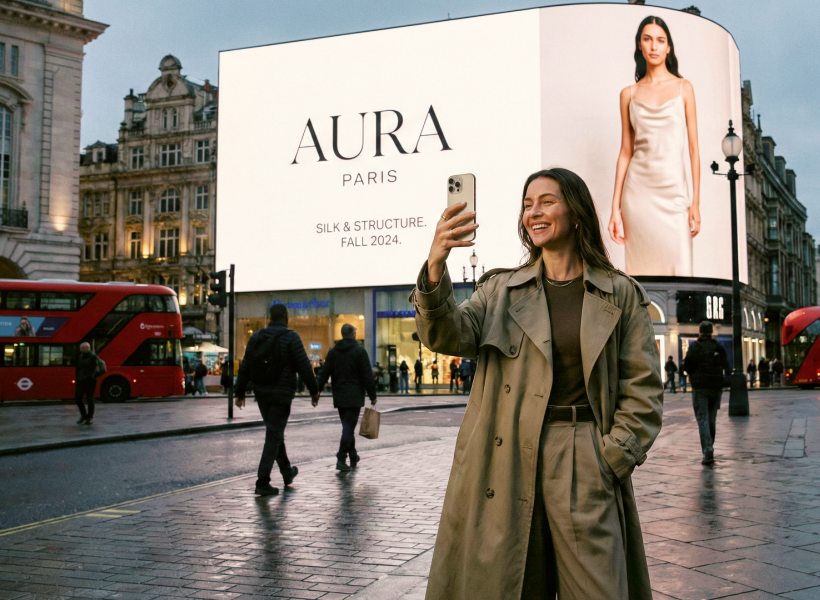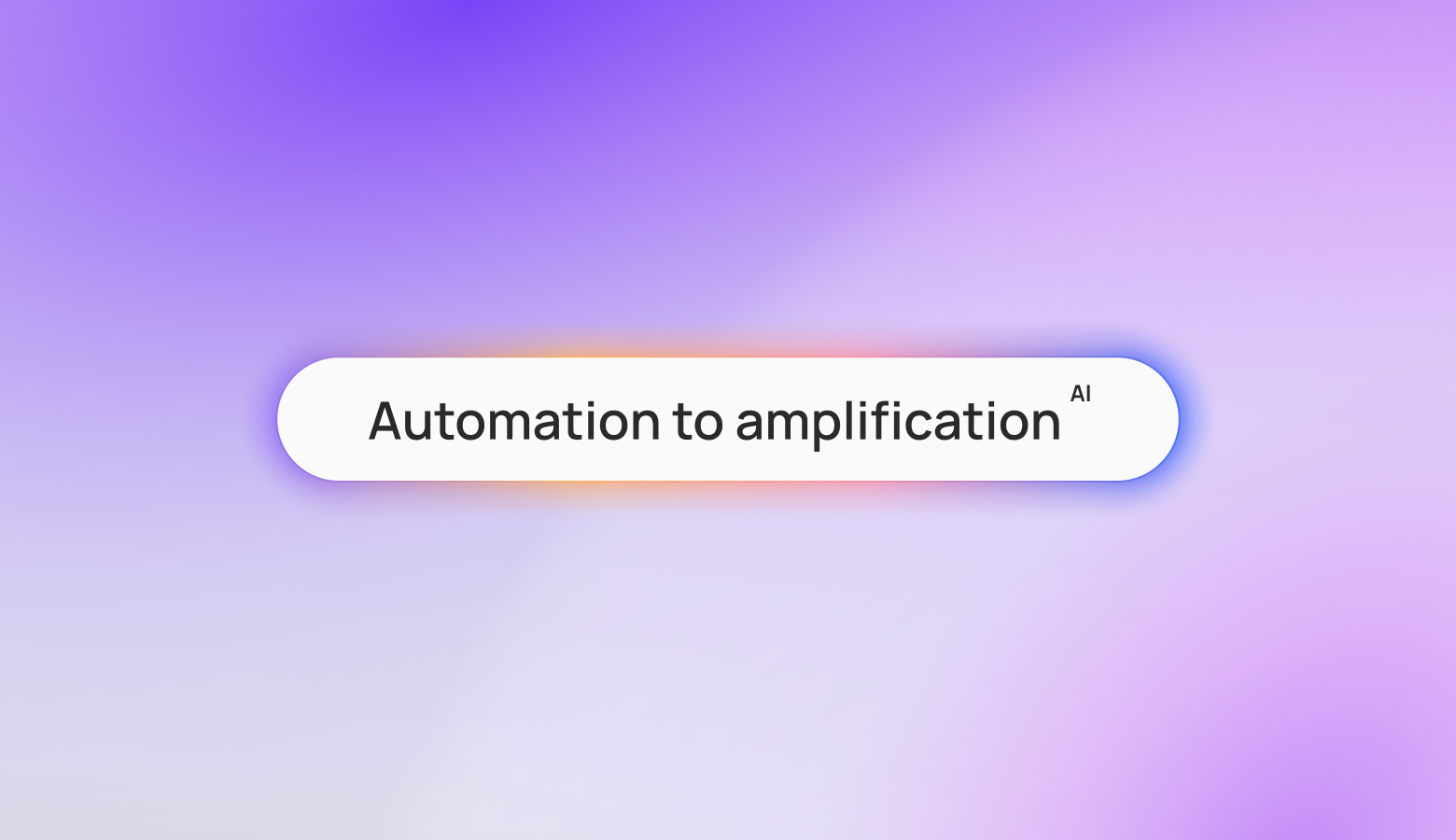2024 OOH Trends

2023 was the year of Artificial Intelligence (AI). From redefining consumer engagement to enhancing campaign precision, AI's impact on Out-of-Home (OOH) cannot be overstated.
But AI was not the only technology making waves in 2023. With the emergence of innovations like Faux OOH (FOOH) and improved campaign measurement and data analytics capabilities, OOH saw an influx of $36 billion in 2023, up from $31 billion in 2021 and 2022, respectively.
With global OOH spending expected to exceed $40 billion this year, here are five pivotal trends advertisers should look out for in 2024:
1. An OOH Eye on AI
The OOH industry is undergoing a remarkable shift through its adoption of AI, which simplifies the creation of engaging brand experiences and reshapes consumer interactions with campaigns.
The evidence is clear: this technology is not just a fad. It is already making outdoor advertising more precise, personalized, and efficient.
For example, Generative (Gen) AI can automate the campaign planning approach by identifying the optimal formats and placements to reach a desired audience. Additionally, it facilitates speedy analysis of available consumer data, helping us build audience movement models.
AI can also boost programmatic DOOH (pDOOH) through hyper-localization, tailoring messages to specific geographic areas and responding in real-time to the time of day, weather, or cultural/regional events.
However, it is important to note that using this technology comes with risk. As Billups’ CTO Shawn Spooner emphasizes, artificial intelligence is in its early stages and far from limitless.
While AI supports the heavy lifting in campaign development, it cannot adequately account for brand strategy and safety; a lack of extensive, quality data can hamper the technology's utility for necessary data analysis.
Agencies leaning into AI should do so pragmatically, emphasizing the human element of their strategic and creative approaches.

2. OOH Increasingly Reaching Customers Throughout the Funnel
Out-of-Home advertising continues to transcend its traditional role as a brand awareness booster; it is now a dynamic option capable of engaging customers throughout the marketing funnel. This is crucial, as brand KPIs continue to evolve and clients challenge their OOH dollars to measure true outcomes.
From attracting customers to guiding them through consideration, triggering conversions, and fostering brand advocacy, OOH can ensure that brand messaging resonates down the funnel.
2023 OAAA research indicates that, among surveyed consumers, 65% have taken action (e.g., visiting a store) after viewing a digital billboard ad, and 52% took action on a mobile device (e.g., visiting a brand’s website, accessing a discount, or making a purchase) following exposure to OOH.
Consumers throughout the funnel rely on the medium to learn about “a new business/service … special offers and promotions … [and] an advertiser’s website or social media.”
Today’s advertisers are hungry for accurate outcome measurements. OOH metrics and attribution have evolved to precisely pinpoint the impact of media placements on direct business outcomes.
This integration allows advertisers to craft messaging amplifying traditional or digital campaigns, making OOH indispensable for the performance age.
3. Customers Seeking Brand Experiences
In 2024, customers are seeking authentic brand experiences transcending traditional digital advertising, accentuating OOH’s potential.
According to OAAA’s report, outdoor advertising’s uniquely engaging nature helps it achieve the highest ad recall of all core media, and traditional and digital billboards evoke a 61% favorability rate among American consumers – greater than any other competitive channel.
Kantar’s 2023 Media Reactions study further reveals a consensus among consumers that OOH provides an excellent opportunity for brands to access “the full range of experiences and entertainment that media channels have to offer.”

This positive consumer sentiment toward OOH dovetails with increasing traffic in campaign hotspots.
OAAA details that 86% of adults reported taking a vehicle journey and 56% reported walking in a town or city downtown in the last 30 days. From 2022 to 2023, US air travel also grew by over 10%, and transit ridership increased by 13.6%.
In short, OOH campaigns fill a needed desire for engaging, exciting advertising experiences among consumers increasingly traveling to OOH hotspots for work and leisure.
4.Brand Experiences: IRL and … Virtually?
Out-of-Home (OOH) advertising is undergoing a big transformation with the rise of Faux OOH (FOOH), fueled by the use of computer-generated imagery (CGI).
Evidence by viral videos splashed across social media, FOOH is turning static billboards, digital screens, and posters into dynamic, immersive experiences. This development expands the horizons of brand storytelling, thriving on synergy with mobile devices.
A great example is Maybelline’s 2023 “Sky High Mascara'' campaign depicting oversized, digital mascara wands and eyelashes on the London metro. This ad quickly went viral on social media, boosting sales and inspiring campaigns from Kylie Cosmetics, North Face, and McDonald’s.

However, while FOOH’s potential is remarkable, so are the controversies it can generate in regards to paid media spaces, authenticity, and legality.
Some industry critics question FOOH’s ethical legitimacy. They ponder what constitutes “real” OOH and whether consumers can differentiate between authentic and simulated outdoor experiences. There are also legal and financial factors to consider.
While FOOH can drive buzz and traffic for brands on social media, it lacks traditional OOH's authenticity and real-life experience, two factors that make outdoor advertising highly trusted among consumers.
5. Sustainability
The OOH industry is changing in response to the growing consumer concern for sustainability. Brands are aligning their outdoor strategies with environmental initiatives, using eco-friendly materials, LED lighting, and solar power.
Mixing eco-friendly elements into OOH campaigns not only contributes to environmental preservation but also strengthens connections with consumers who increasingly hold sustainable values.
The consumer focus on sustainability extends beyond short-term trends, becoming a key aspect of brand loyalty. Advertisers must navigate this landscape authentically, as greenwashing practices can break trust.
Looking Ahead
We are already seeing signs that 2024 will be an exciting year for the OOH industry.
With innovative technologies like AI and augmented reality, the resurgence of in-person experiences, and a renewed focus on sustainability, outdoor advertising is set to captivate audiences throughout the marketing funnel, solidifying its position as a dynamic, influential medium in global advertising.
Get Started with Measuring your pDOOH Campaigns
You can use various tools and platforms to measure pDOOH campaign results. These can help you aggregate mobile and online channels, use retargeting to improve conversions, leverage mobile and geofencing technology to inform targeting, and more.
Want to learn more about how we can help you with your pDOOH campaigns?
At Billups, we have in-house programmatic specialists who can work with you to help create detailed plans for each or any of these goals and execute the campaigns efficiently. Contact us today!
Helpful resources
Explore our article library



